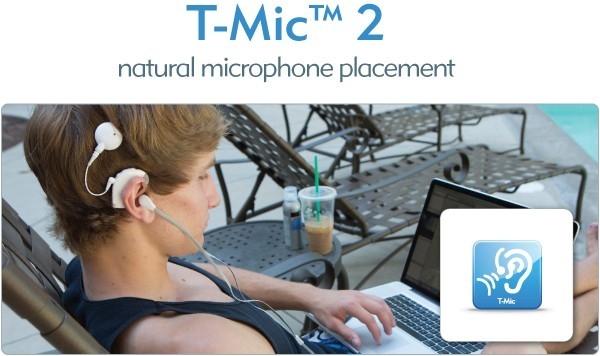

Harmony™ Sound Processor
General Maintenance Tips
If you suspect there is an issue with your or your child’s cochlear implant system, first try the following maintenance tips:
- Visually inspect the sound processor for any obvious damage, disconnections, etc.
- Verify that the system’s battery is fully charged.
- Check to ensure the battery is in place and properly seated.
- Inspect the headpiece cable to see if it is connected properly, twisted, frayed, or broken.
- Check the headpiece for any cracks or damage.
- If something appears broken, and you have spare equipment, such as an extra headpiece, replace the suspected damaged equipment with your spare equipment and see if the system then functions properly.
If there are no obvious signs of cracking or damage, continue on to the guidelines for your sound processor. If there are signs of cracking, fraying, or other damage, contact the Advanced Bionics office in your region to order replacement equipment.
Follow these steps to set up and check that your Harmony™ processor is working properly:
Step 1
Slide a fully charged PowerCel™ battery onto the processor module. This will turn on the Harmony sound processor. Check to ensure that the PowerCel battery is in a fully aligned position with the processor module and that the PowerCel battery is charged by verifying that the visual indicator (LED) sequence displays three to four quick orange blinks.
Step 2 (optional)
Position the Accent Color Cover over the Harmony processor and snap into place.
Step 3
Make sure that the headpiece cable is plugged into the processor module. Verify that the cable is not twisted or frayed.
Step 4
Align and gently snap into place the selected Earhook. Check to verify that the Earhook is properly positioned. To remove the Earhook, turn in either direction until the Earhook releases from the post.
Step 5
Verify that the program selector and Volume Control are in the desired positions.
Step 6
Ensure that the processor is in a comfortable position behind the ear or at your preferred wearing location.
Step 7
Ensure that the headpiece is positioned over the internal implant (you will feel the magnetic attraction).
Step 8 (for children)
Perform a behavioral listening check, using the Ling Six sounds or another listening activity.
If there are no obvious signs of damage, continue on to the troubleshooting guidelines for your sound processor. If there are visible signs of damage to any part of your sound processor system, contact your Regional Advanced Bionics office to order replacement equipment.
Download Harmony Product Guide
Many cochlear implant recipients enjoy listening to music.
NOTE: AB strongly recommends that the Auxiliary Audio Cable only be used with battery-operated devices.
The Harmony Sound Processor uses the T-Mic microphone to make listening to your portable music player simple. As the industry’s only microphone placed at the opening of the ear canal, the T-Mic picks up sound from a natural position, allowing you to enjoy earbuds and headphones like everyone else. The T-Mic is an optional earhook and is the standard choice for most adult cochlear implant recipients.
AB offers a Direct Connect™ Earhook, Direct Connect Cable, and an Audio Interface Cable. Together, these accessories allow you to connect Harmony processors directly to portable music players. Simply attach the Direct Connect Earhook to the sound processor and connect the Direct Connect Cable to the Earhook. Connect the Audio Interface Cable at one end to that cable and the other to a portable music player.
Staying connected to family and friends over the telephone, or listening to your favorite music on consumer audio devices, can be rewarding experiences for cochlear implant recipients. AB has a full line of accessories to make sure you or your child can connect as conveniently and effortlessly as possible.


